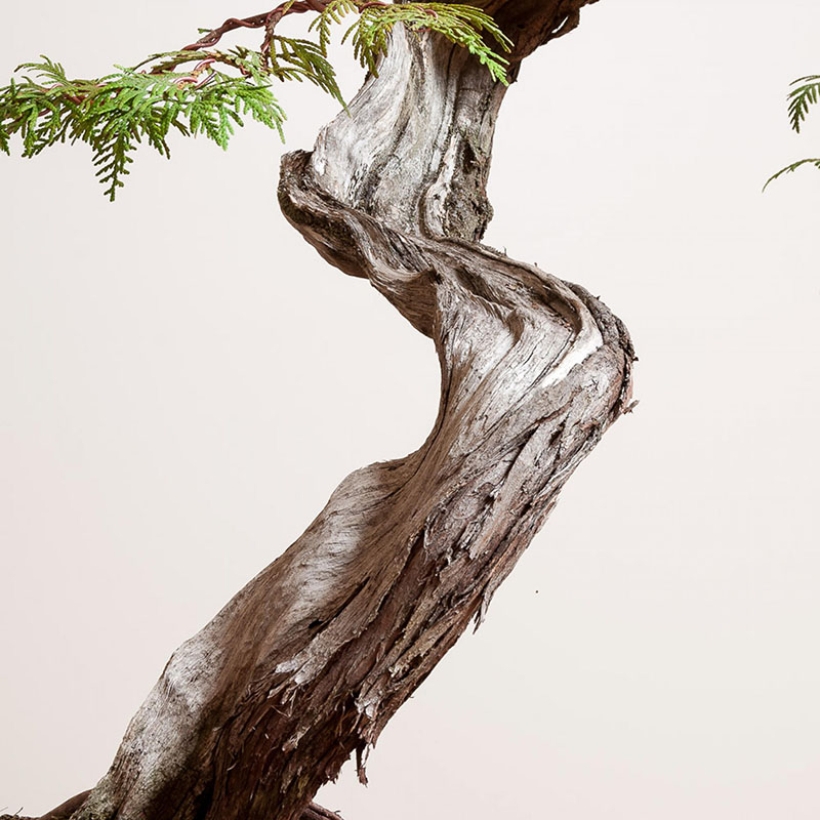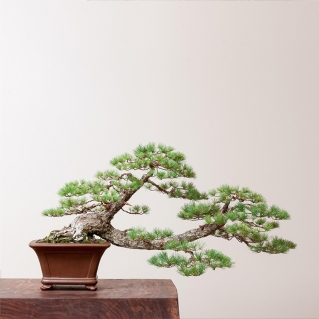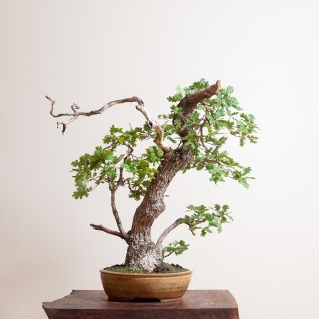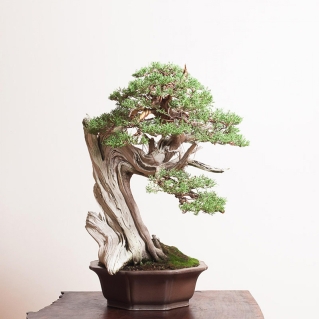Western Red Cedar Bonsai
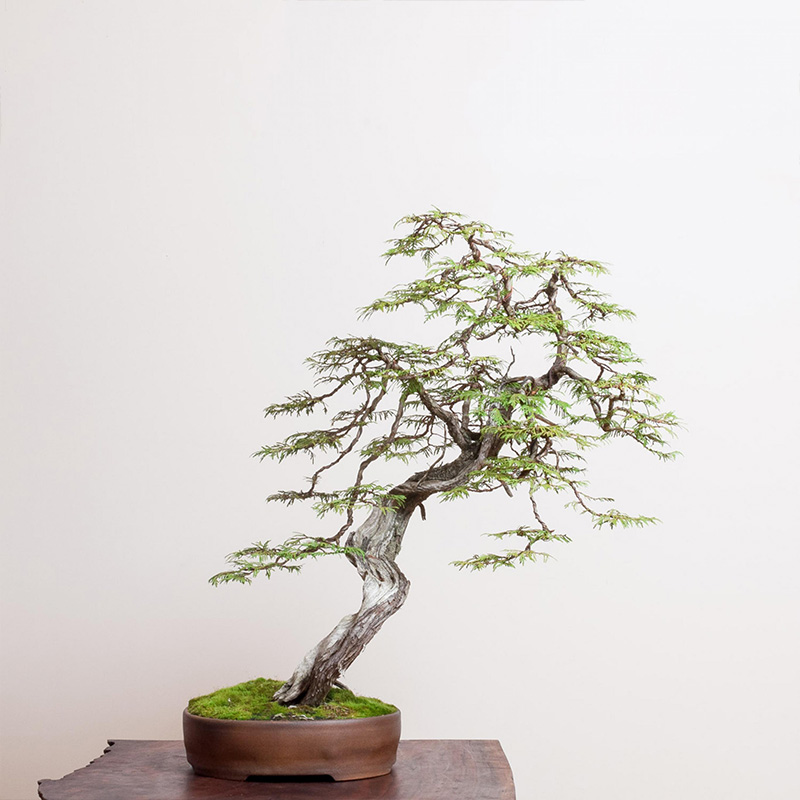
General Information
Western red cedar—thuja plicata—is used throughout the world as a border plant. However, this tree is much more than just a common hedge.
Western red cedar is the unsung hero of North American bonsai. It’s a wonderfully malleable species that lends itself to aggressive dense growth in response to pruning and handling.
It is an adaptable species that has the ability to accommodate a variety of different approaches and aesthetic capacities.
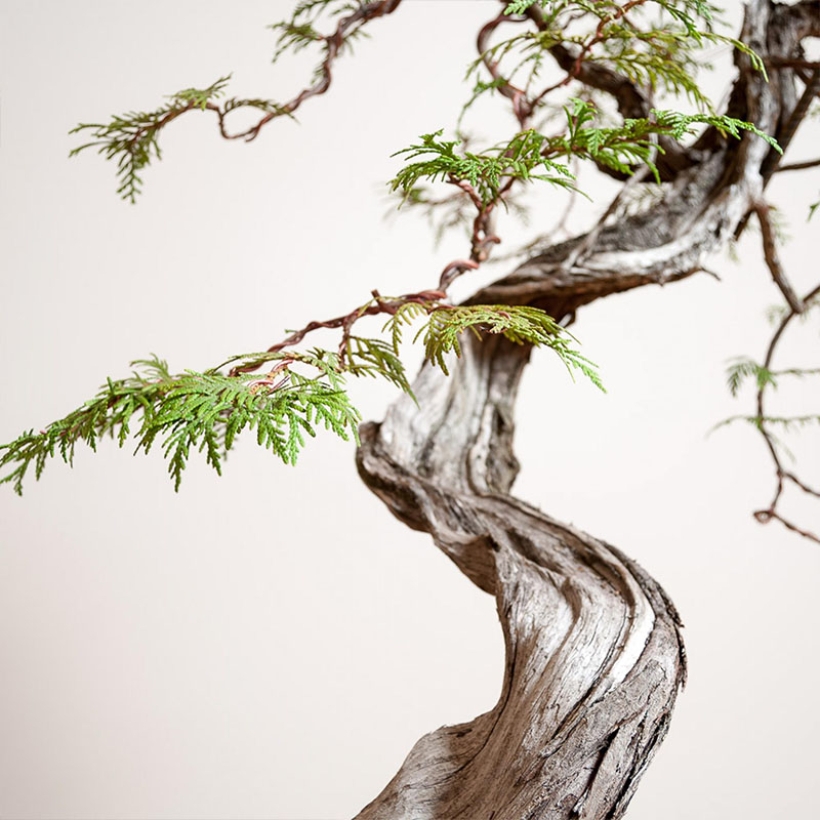
Caring for Western Red Cedar Bonsai
Watering
Western red cedar bonsai is a frond-form elongating species.
As with other high water mobility species, their balance of water and oxygen is achieved with a slightly higher degree of water.
In general, the point of watering balance is realized when the soil is still slightly moist, so do not allow it to become completely dry.
Sun Exposure
Western red cedar bonsai requires full sun throughout the spring, fall, and winter months.
In the summer, if the temperature is 85℉ or above and your Western red cedar bonsai is in the shallow, confined environment of a bonsai vessel, it will require a bit more care. In this case, you will want to supply it with a 30% shade cloth or a combination of morning sun/dappled afternoon shade.
Temperature
When it comes to temperature needs, Western red cedar bonsai is able to tolerate extremely hot conditions—including temperatures in excess of 100℉ with high humidity.
However, in order to continue to thrive, the tree will require a shade cloth for temperatures over 85-90℉. If not properly protected from the intense light and heat, you will see yellowing and possibly significant burning.
Western red cedar bonsai is also very tolerant and durable in cold temperatures up to 15-20℉.
To properly safeguard Western red cedar bonsai during extreme conditions of heat or cold, it must be potted in an appropriately sized container.
Fertilizing
Western red cedar bonsai may be aggressively fertilized—if you want to take on the responsibility of pruning the robust, vigorous growth.
Otherwise, providing only moderate to light fertilization will require pruning just one time per year.
Pruning
As long as you are providing moderate to light fertilization for refinement, you can prune prior to the flush of growth for structural styling in the spring.
You may also prune in the early fall for structural removal, initial styling, etc.
For refinement (post flush hardened pruning), you should generally allow Western red cedar bonsai to deplete its energy over the late spring and early summer. You will then return to pruning in mid to late summer (July or August).
You’ll want to catch the tree before it starts to shed its interior foliage and goes into post-summer dormancy. This will involve pruning overly elongated shoots back to active secondary or tertiary internodes to slow the growth over the fall and control the resources that accumulate.
You'll need to prune only once, while still being able to maintain its shape from the spring through summer. This will enable you to enjoy the canopy and silhouette while managing the strength and energy to maximize the tree’s quality.
The refinement pruning in the mid to late summer is a key component to maintaining the health and visual appeal of Western red cedar bonsai.
Wiring
Western red cedar bonsai may be wired to define its shape and create an upright or a cascading style.
Wiring can be performed at any stage of growth and may need to remain on the tree for a year or more due to the slow growth rate. Be sure to monitor your tree for any potential problems.
Repotting
The Western red cedar bonsai has an extremely durable root system. As with all elongating species, it gains strength in its vascular system by storing sugars and starches accumulated over the fall.
As long as the tree has a robust foliar mass that remains untouched, heavy work on the foliar mass at the appropriate times of year (spring or early fall) is fine. During these times, you will be able to perform styling and major reduction.
Since Western red cedar bonsai is a high water mobility, elongating species, for repotting, you will need to use 2 mm to 6 mm particles of either:
● 3:1:1 Akadema-pumice-lava; or
● 2:1:1 Akadema-pumice-lava
As far as the timing of repotting, you will want to watch for the winter colors of yellow or red to begin to subside. As the tree begins turning green, prior to the onset of soft fleshy tips, Western red cedar bonsai can be handled fairly aggressively in the reporting process.
Propagation
Western red cedar bonsai propagates via cutting or seed, with seedlings being extremely virile in the native environment.
The trees may also be propagated by air layering.
Pests/Disease
Western red cedar bonsai has a very limited amount of pests and disease issues.
The presence of spider mites in the summertime would indicate nutrient-related imbalances, but this is rare.
Tree borers could potentially be a problem, but again this is not at all common.
Western Red Cedar Bonsai FAQS
If you are growing a Shohin or medium size Western red cedar, pinching the elongated growth in the spring will cause the growth to become very dense, constricted,tight and compact.
Although this may seem valuable, the essence and aesthetic that makes Western red cedar so beautiful is the soft, delicate, airy frond-like presentation of the foliar mask.
From that perspective, larger trees lend themselves to that proportion and may be more appropriately refinement pruned in the mid to late summer.
However, for smaller specimens like Shohin, or medium-sized trees, pinching is needed to control the foliar proportion.
Pinching allows you to create the proper density and maximize the proportion to show the smaller form of the tree and perfectly represent nature in miniature.
As a landscape piece, the Western red cedar bonsai is tolerant of extremely severe conditions in the natural environment (full sun, high heat, etc.).
In the natural environment, however, their roots are typically shaded, and they have an expansive abundant root system.
When Western red cedar bonsai is placed in the confined environment of the bonsai container, the roots must be protected from overheating and the foliar mass from overly intense sunlight during the hottest portions of the year.
Absolutely.
Winter color in Western red cedar bonsai is a common aspect of containerized cultivation.
This is not something we see in the native landscape, where the trees have a high buffering capacity for temperature exchange in the root. But in a bonsai container, we see winter color as a very common, normal function. It’s an indication of a healthy tree and something we should accept.
